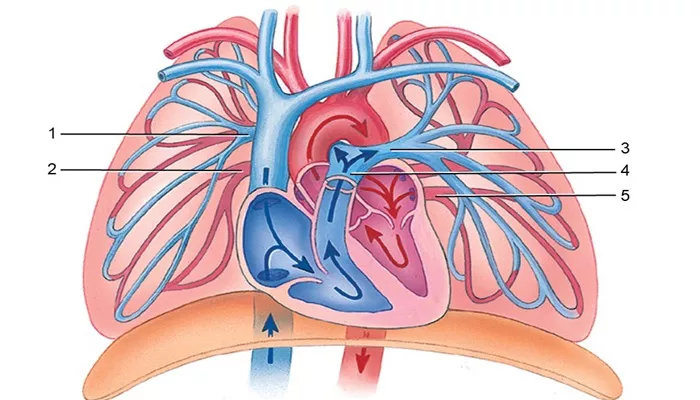Scientists from Johns Hopkins Medicine have discovered that 48 samples of bioengineered human heart tissue experienced significant changes after spending 30 days aboard the International Space Station (ISS). The low-gravity environment weakened the tissues and disrupted their normal rhythmic contractions compared to samples kept on Earth.
The researchers noted that the heart tissues “do not fare well in space.” Over time, the samples in space exhibited a contraction strength that was about half as strong as those maintained on Earth.
This research enhances our understanding of how low gravity affects astronauts’ health during extended missions and may provide insights into heart muscle aging and treatment options on Earth.
A detailed report on this analysis will be published in the Proceedings of the National Academy of Sciences during the week of September 23.
Previous studies have shown that some astronauts return from space with age-related conditions, such as reduced heart function and irregular heartbeats (arrhythmias). While some effects fade over time after returning to Earth, scientists are eager to study these impacts at a cellular level to find ways to protect astronauts during long missions.
Deok-Ho Kim, Ph.D., a professor at Johns Hopkins University School of Medicine, led the project sending heart tissue to space.
To create the cardiac samples, researcher Jonathan Tsui, Ph.D., transformed human induced pluripotent stem cells (iPSCs) into heart muscle cells (cardiomyocytes). Tsui, who was a Ph.D. student in Kim’s lab at the University of Washington, followed Kim to Johns Hopkins in 2019, where they continued their research on space biology.
Tsui placed the heart tissues into a miniaturized bioengineered tissue chip designed to mimic an adult human heart environment. This chip allowed researchers to collect data on how the tissues contract. The chamber was about half the size of a cell phone.
To transport the tissues for the SpaceX CRS-20 mission launched in March 2020, Tsui had to hand-carry them to Florida and maintain them for a month at Kennedy Space Center. He is now a scientist at Tenaya Therapeutics, a company focused on preventing and treating heart disease.
Once aboard the ISS, scientists received real-time data every 30 minutes about the strength of tissue contractions and any irregular beating patterns. Astronaut Jessica Meir, Ph.D., M.S., changed the nutrient solution surrounding the tissues weekly and preserved samples for later analysis. A set of cardiac tissues developed under identical conditions on Earth served as a comparison.
After returning to Earth, Tsui continued monitoring and collecting data from the tissues. “An incredible amount of cutting-edge technology in stem cell research, tissue engineering, biosensors, and microfabrication went into ensuring these tissues remained viable in space,” Kim explained. His team developed the tissue chip used for this project and others.
Devin Mair, Ph.D., a former Ph.D. student in Kim’s lab now serving as a postdoctoral fellow at Johns Hopkins, analyzed how well the tissues contracted. The results showed that not only did strength diminish in space, but irregular beating patterns also developed—disruptions that can lead to heart failure. Normally, cardiac tissue beats about once per second; however, this interval increased nearly fivefold for samples in space. Fortunately, this measure returned close to normal once back on Earth.
The scientists also observed that sarcomeres—the protein structures in muscle cells responsible for contractions—became shorter and more disordered in space-bound tissues. This disorganization is characteristic of human heart disease.
Additionally, mitochondria—the energy-producing structures within cells—grew larger and rounder in the space samples while losing their typical folds essential for energy production.
Finally, Mair, along with Eun Hyun Ahn, Ph.D., an assistant research professor of biomedical engineering, and Zhipeng Dong, a Johns Hopkins Ph.D. student, examined gene expression in both space-housed tissues and those on Earth. They found increased gene activity related to inflammation and oxidative damage in the samples from space—both indicators of heart disease.
This research highlights significant challenges posed by long-duration spaceflight on cardiovascular health and emphasizes the need for further studies to develop effective countermeasures for astronauts’ well-being during extended missions.
Related topics:


